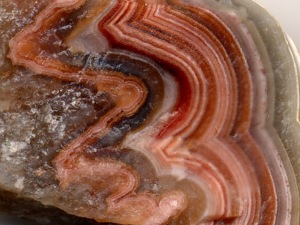
HARDNESS: 7
DENSITY: 2.65 g / cm3
SCRATCH: White
COLOR: Colorless to very varied coloring
BRIGHTNESS: Vitreous, silky, matte
EXFOLIATIONN- FRACTURE: None – Conchoidal
CRYSTALLISATION: trigonal system
TRANSPARENCYTransparent to translucent, opaque
Agate is a set of varieties of chalcedony, which is in turn a variety of quartz. It comes in a wide range of colors.
Quartz is a mineral composed of silicon dioxide. It is so hard that can scratch the common steels. His tenacity is fragile. Quartz is formed by slow crystallization of highly acidic terminal magmas.
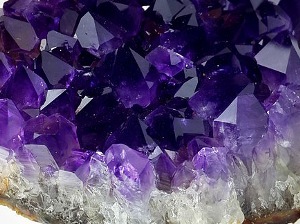
HARDNESS: 7
DENSITY: 2.6 g / cm3
SCRATCH: White
COLOR: Purple
BRIGHTNESS: Between waxy and vitreous
EXFOLIATIONN- FRACTURE: None – Conchoidal
CRYSTALLISATION: Trigonal System
TRANSPARENCYTransparent, often translucent
Amethyst is a macro-crystalline quartz variety. Tetrahedral crystals, botryoidal aggregates and compact masses. Its characteristic violet color can be more or less intense according to the amount of iron it contains. Although very resistant to acids is very supceptible heat. In fact when heated to over 300 ° C its color changes to brown, dun, yellow or green, depending on its quality and its place of origin.
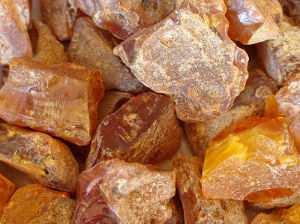
HARDNESS: 2 – 2.5
DENSITY: 1.10 g / cm3
SCRATCH: White
COLOR: Yellow to red
BRIGHTNESS: Vitreous
EXFOLIATION- FRACTURE: Conchoidal
INDEX OF REFRACTION: 1.54
TRANSPARENCY: Transparent to translucent
Fossilised resin from conifers, yellow, brown and red. It has occasionally insects, plant debris and bubbles icluded. It can be treated with oil to remove bubbles. It is electrified when rubbed with a cloth. In contact with chemicals may deteriorate.
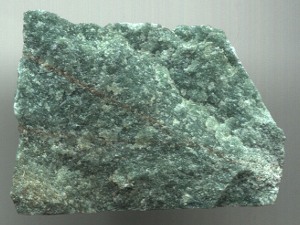
HARDNESS: 6.5
DENSITY: 2,64 – 2.69 g/cm3
SCRATCH: White
COLOR: Green, orange, brown, yellow, blue or grey
BRIGHTNESS: Green or silvery blue
CRYSTALLIZATION: Trigonal system
TRANSPARENCY: Translucent, opaque
Aventurine is a quartz with certain inclusions that give it its color and reflections. The most common inclusions are:
-Mica fuchsita: typical emerald green and sometimes blue. Silver and gold flashes if it also contains Muscovite mica.
-Hematites or Goethite: they give it a reddish brown color.
It does not appear as an isolated crystal; his most common habit is the massive one. It is usually translucent, but an excess of fuchsite can turn it opaque. The rest of their properties are the same as those of quartz.
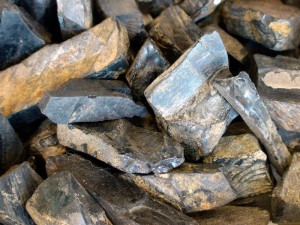
HARDNESS: 3 – 4
DENSITY: 1,2 – 1,3 g/cm3
SCRATCH: Dark brown
COLOR: Bright black
BRIGHTNESS: Vitreous
EXFOLIATION- FRACTURE: Concoidea
CRYSTALLIZATION: Orthorhombic system
TRANSPARENCY: Opaque
LUMINESCENCE: Yellowish green
Black-Jet has a compact conformation, is soft to the touch, light and quite hard. In Asturias it is called Acebache or Azebache. The best jet in the world, along with Whithby, is in Asturias in the Jurassic Coast, between Gijón and Ribadasella, with a texture, an intense color and incomparable hardness. Recent studies carried out by a research team of the University of Oviedo, show that the Asturian black-jet comes from a family of Jurassic trees, extinct 65 million years ago.

HARDNESS: 7
DENSITY: 2.6 g/cm3
COLOR: Apple green
BRIGHTNESS: Ceramic, vitreous
CRYSTALLIZATION: Trigonal system
Chrysoprase or Australian jasper is a green variety of chalcedony. It has the properties of quartz of which are cryptocrystalline varieties.
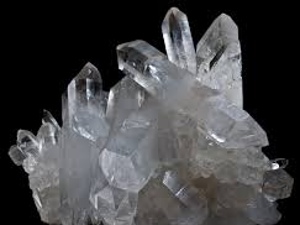
HARDNESS: 7
DENSITY: 2,65 g/cm3
SCRATCH: White
COLOR: Colorless to very varied coloration
BRIGHTNESS: Vitreous, silky, matte
EXFOLIATION- FRACTURE: None – Concoidea
CRYSTALLIZATION: Trigonal system
TRANSPARENCY: Transparent to translucent, opaque
Quartz is a mineral composed of silicon dioxide. It has so much hardness that it can scratch common steels. His tenacity is fragile. It is the most abundant mineral in the earth’s crust. It presents colored varieties such as amethyst, smoky quartz, citrine, onyx, sardonyx and heliotrope, etc.
Dipiramidal crystals to tabular, acicular, prismatic long to short, fibrous aggregates, botryoidal and stalactitic and layers, concretions, geodes, granular masses and compact masses.
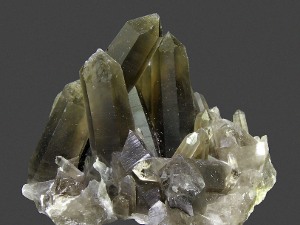
HARDNESS: 7
DENSITY: 2,65 g/cm3
SCRATCH: White
BRIGHTNESS: Vitreous, silky, matte
EXFOLIATION- FRACTURE: None – Concoidea
CRYSTALLIZATION: Trigonal system
TRANSPARENCY: Transparent to translucent, opaque
Smoky quartz is a translucent gray variety of quartz. From an almost total transparency to a brown-gray crystal that is almost opaque.
Some can also be black. Like other quartz gems, it is a crystal of silicon dioxide. The smoke color is due to free silicon, which is formed from silicon dioxide by natural irradiation.
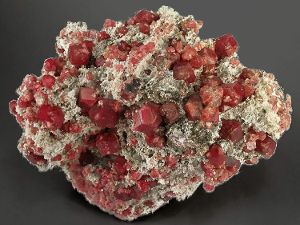
HARDNESS: 6,5 – 7,5
DENSITY: 3,1 – 4,3 g/cm3
SCRATCH: Blanca
COLOR: Todos excepto azul
BRIGHTNESS: Vítro o resinoso
EXFOLIATION- FRACTURE: No tiene fractura definida,
CRYSTALLIZATION: Sistema cristalino cúbico, también llamado isométrico
TRANSPARENCY: Transparentes a opacos
Los granates son un grupo de silicatos minerales, neosilicatos, que han sido usados desde la edad de bronce como piedra preciosa y abrasivo. Tienen propiedades físicas similares pero composición química distinta entre sí. Las diferentes especies son piropo, almandino, spessartina, grossularia, uvarovita y andradita.
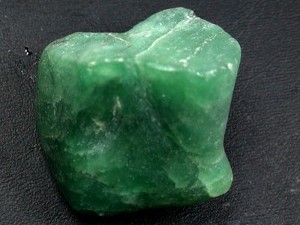
HARDNESS: 6 – 7
DENSITY: 3,10 – 3,30 g/cm3.
SCRATCH: White
BRIGHTNESS: Vitreous-silky.
EXFOLIATION- FRACTURE: Chipped
CRYSTALLIZATION: monoclinic, granulated aggregate, intergrown / fine fiber aggregates
TRANSPARENCY: Translucent, opaque
Jade is the name of mineral aggregates composed of jadeite, nephrite, or both. Jadeite is a pyroxene rich in aluminum and sodium, nephrite in an aggregate of microcrystalline interlaced calcium fibers, amphibole mineral rich in magnesium-iron. Jadeite can be translucent emerald green (Imperial Jade), it can also contain black, red, pink and violet. Nephrite, more common, usually has different shades of green and gray, occasionally yellow, brown or white.
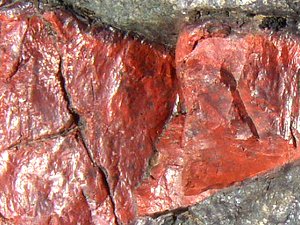
HARDNESS: 6 – 7
DENSITY: 3,10 – 3,30 g/cm3.
SCRATCH: Blanca
BRIGHTNESS: Vítreo-sedoso.
FRACTURA: Astillada
CRYSTALLIZATION: monoclínico, agregado granulado, intercrecido / agregados de fibras finas
TRANSPARENCY: Translúcido, opaco
Variedad de cuarzo, microcristalino, más denso. De procedencia volcánica y en contacto con sedimentos, localmente se encuentra como resultado de la petrificación de materia vegetal. Sus colores van de rojos o violáceos, grises a negros, en ocasiones verdes, amarillos, pardos, siendo escasas las variedades monocromáticas. Destaca el jaspe rojo, muy apreciado desde la Antigüedad. Hay yacimientos en Alemania, Rusia, Madagascar, entre otros.
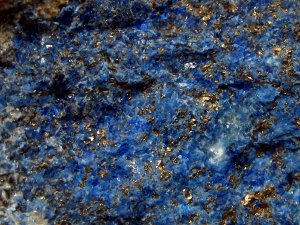
HARDNESS: 5,5
SCRATCH: White, light blue.
BRIGHTNESS: Vitreous, smeary in fractures
EXFOLIATION- FRACTURE: Perfect to uneven fracture. Conchoid.
CRYSTALLIZATION: Well-formed crystals, arranged in fracture planes.
Semiprecious stone composed of minerals lazurite, calcium silicate (provides the blue color), wollastonite and calcite (gray and whitish veining) and pyrite (golden reflections). It comes from Afghanistan and northern Chile. Much appreciated since Antiquity, in the Middle Ages it was worth more than gold. Unlike similar stones such as azurite, it does not effervesce in contact with hydrochloric acid.
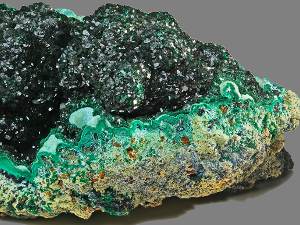
HARDNESS: 4
DENSITY: 4,0 g/cm3
SCRATCH: Light green
BRIGHTNESS: Vitreous, matte, earthy
EXFOLIATION- FRACTURE: Perfect – Conchoidal to Irregular
CRYSTALLIZATION: Monoclinic system
TRANSPARENCY: Opaque
It is a mineral of the carbonate group (it is a copper carbonate dihydroxide). Semiprecious stone of green color, is very used in jewelry, covering of columns or elaboration of sumptuary objects, in Antiquity it was used like coloring. It occurs in the oxidation zones, it has its origin in the copper mineral associated with azurite, cuprite and other minerals. The deposits of Colombia, Congo, South Africa, Zimbabwe, Russia, Namibia, Hungary and E.E.U.U. are the most relevant It is effervescent at the touch of hydrochloric acid.
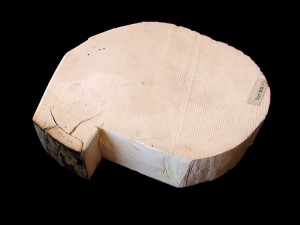
HARDNESS: 2 – 3
DENSITY: 1,7 – 2 g/cm³
ÍNDICE DE REFRACCIÓN: 1.535 a 1.570
COLOR: White, creamy
FLUORESCENCE: Violet blue
CRYSTALLIZATION: Amorphous
TRANSPARENCY: Translucent to opaque
COMPOSICIÓN: 25% organic material and 75% apatite
With an age of between 10,000 and 15,000 years; the tusks of mammoth ivory come from the Siberian steppe, where the cold has kept its properties intact. The melting and erosion of permafrost are contributing to their release. Since the ban, a fortunate but insufficient measure, of trading in elephant ivory, the use of mammoth ivory has increased. The two types of ivory can be differentiated thanks to the drawings they present in the fangs (Schreger lines).
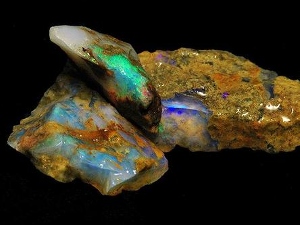
HARDNESS: 5 – 6,5
DENSITY: 1,9 – 2,2 g/cm³
SCRATCH: Blanca
BRIGHTNESS: Incoloro (hialita), blanco (ópalo lechoso), Iridiscente (ópalo precioso), marrón, rojizo, amarillo, verde, azul
EXFOLIATION- FRACTURE: No tiene;fractura concoidea
CRYSTALLIZATION: Amorfo
TRANSPARENCY: Transparente a translúcido,opaco
Pertenece a la clase de los silicatos. Esta compuesto por dióxido de silicio (sílice). Su origen es hidrotermal en rocas y tobas volcánicas,en diversos tipos de rocas y tufitas volcánicas,en diferentes tipos de rocas sedimentarias,en restos orgánicas y en fuentes termales. Hay dos clases principales de ópalos: el ópalo común y el ópalo noble;la diferencia es que el común no presenta juego de colores y el ópalo noble sí. El juego de colores se produce por la disposición aleatoria de placas submicroscópicas de esferas de tridimita o cristobalita, que actúan como redes de difracción de la luz. La mayoría procede de Australia.
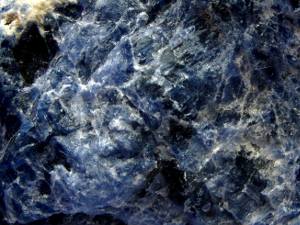
HARDNESS: 6
DENSITY: 2.3 g/cm³
SCRATCH: Blanca
BRIGHTNESS: Vítreo a graso
EXFOLIATION- FRACTURE: Pobre – De concoidal a desigual
CRYSTALLIZATION: Sistema Cúbico
TRANSPARENCY: Transparente a translucido
La sodalita pertenece al grupo de los silicatos. Su origen es mágmatico en sienitas alcalinas y fonolitas, y se asocia con circón, titanita y nefelina;
también hidrotermal en mármoles. Esta gema suele ser de tonos azules o lila claro, también la hay blanca, gris, rosa o verde. Son muy apreciados los ejemplares en forma de cristales dodecaédricos con transparencia, pues suele encontrarse en forma de masas amorfas y opacas, aunque con una bella coloración.
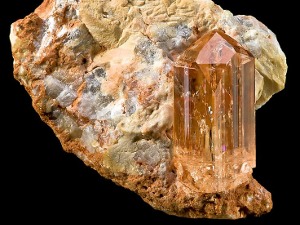
HARDNESS: 8
DENSITY: 3,5 – 3,6 g/cm³
SCRATCH: Blanca
BRIGHTNESS: Vítreo a mate
EXFOLIATION- FRACTURE: Perfecta según la base;fractura concoidea
CRYSTALLIZATION: Sistema ortorrómbico
TRANSPARENCY: Transparente a translúcido
Es un mineral del grupo de los aluminusilicatos. Esta piedra preciosa, confundida en ocasiones con el diamante, presenta un color amarillo-amarronado, aunque hay también ejemplares con tonos de ocre, azul, violeta, rojo o incoloro. Se encuentra habitualmente en forma de cristales prismáticos crecidos en huecos que están unidos con la roca madre. Además existe una variante masiva o granulosa. Algunos de los yacimientos más importantes se encuentran en República Checa, Brasil, Sajonia, Noruega, Suecia, Japón, México, Sri Lanka, Birmania, Pakistán y Estados Unidos.
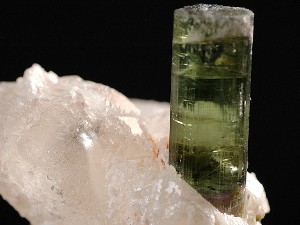
HARDNESS: 7
DENSITY: 3,0 – 3,25 g/cm³
SCRATCH: Blanca o gris según la variedad
BRIGHTNESS: Vítreo a mate, transparente a traslúcido según variedad.
EXFOLIATION- FRACTURE: Ninguna – Irregular a Concoidea
CRYSTALLIZATION: Sistema trigonal
Pertenece al grupo de los silicatos. Tiene una formulación quimica muy compleja. La Turmalina tiene tanto propiedades piroélectricas como piezoélectricas:
en los dos extremos se acumulan cargas opuestas tanto bajo presión como al calentarlo, atrayendo objetos ligeros. Tiene muchas variedades: TURMALINA NEGRA (negra azulada o pardo), POVONDRAITA (negra), ELBAITA (rubelita-rosado a rojo-,verdelita -verde-,indicolita -azul-,acroita-incolora-), UVITA (gris,negro,marrón,verde,rojo), LIDDICOATITA(Rubelita,verdelita), FOITITA (negra a púrpura negruzco), ROSSMANITA (rosado).
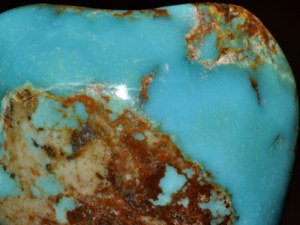
HARDNESS: 5-6
DENSITY: 2,6 – 2,8 g/cm³
SCRATCH: White
BRIGHTNESS: Transparent, translucent to opaque
EXFOLIATION- FRACTURE: Good – Conchoidal
CRYSTALLIZATION: Triclinic system
TRANSPARENCY: Transparent, translucent to opaque
This semiprecious stone is an aluminum and copper phosphate, which is highly valued for its quality and scarcity. Light blue, bluish green or green, it was already used in Ancient Egypt. The blue color is attributed to copper, while the green color may be the result of iron impurities or dehydration. It is a rare mineral, of secondary formation and is found mainly in desert regions. The mines of the current Iran, Sinai or the United States stand out. In Spain you can find turquoises based on ambligonite in the Valdeflorez mine (Cáceres).
